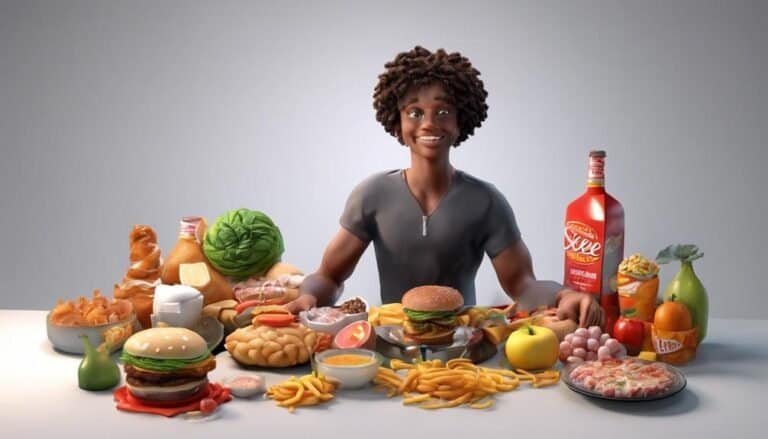Operant Conditioning Explained Simply | Skinner Method
Ever thought about why some actions stick while others disappear? Maybe it’s not about our choices, but the outcomes of those choices. This idea is key to Operant Conditioning, a theory by B.F. Skinner. It’s based on Behaviorism, showing how rewards and punishments shape our actions. We’ll dive into how the Skinner Method changes how we see learning and changing behavior.
Key Takeaways
- B.F. Skinner is a key figure in operant conditioning.
- Operant conditioning looks at how we choose actions based on what happens around us.
- This theory is different from classical conditioning, which looks at automatic reactions.
- The Skinner box was created to study animal behavior in a controlled way.
- Operant conditioning uses reinforcement and punishment in many areas like schools, homes, and therapy.
- It has many uses in fields like education, parenting, and therapy.
What is Operant Conditioning?
Operant conditioning is a key way to change behavior by using rewards or punishments. It shows how actions can be changed by their outcomes. This method uses reinforcement and punishment to shape future actions.
Definition and Overview
Also known as instrumental conditioning, it teaches behaviors through rewards or punishments. B.F. Skinner developed this idea. It’s different from classical conditioning because it looks at how consequences affect behavior.
Positive reinforcement encourages good behavior. Punishment tries to stop bad actions.
Key Concepts of Operant Conditioning
Key ideas in operant conditioning include:
- Neutral Operants: Things from the environment that don’t make behavior more or less likely.
- Reinforcers: Things that make behavior more likely; they can be:
- Positive Reinforcers: Rewards that make a behavior happen again.
- Negative Reinforcers: Taking away something bad after a behavior, which makes it more likely to happen again.
- Punishers: Things that make behavior less likely; they can be:
- Positive Punishment: Adding something unpleasant after a behavior.
- Negative Punishment: Taking away something good after a behavior.
Operant conditioning is key to understanding human and animal behavior. It’s used in education, psychology, and animal training. The balance between rewards and punishments helps change behavior and lead to new learning.
The Theoretical Foundations of Operant Conditioning
B.F. Skinner started operant conditioning, focusing on how rewards and punishments change behavior. He built on Edward Thorndike’s Law of Effect, which says actions with good outcomes get repeated. Skinner aimed to understand how our choices are shaped by their results.
This is different from classical conditioning, which links involuntary reactions to certain things.
Influence of B.F. Skinner
Skinner looked at behavior scientifically, preferring observation and measurement over guessing what’s in our minds. His work with animals in the Skinner box showed how operant conditioning works. He found four main types: positive and negative reinforcement, and positive and negative punishment.
These methods help us see how actions can be made stronger or weaker based on what happens after they are done.
Differences from Classical Conditioning
Classical conditioning deals with automatic reactions to things, but operant conditioning is about actions we choose to do. It shows how we make decisions based on what happened before. Skinner’s ideas are important for teaching, changing behavior, and psychology.
How Operant Conditioning Works
Operant conditioning is key in shaping behavior through consequences. B.F. Skinner developed this learning process. It shows how actions get stronger or weaker based on their outcomes.
The Role of Consequences
Consequences are crucial in operant conditioning. They decide if a behavior will happen again. If a behavior gets a good result, it’s more likely to happen again. But if it gets a bad result, it’s less likely to happen.
This shows that the type of reinforcement matters. Different schedules of reinforcement can change how strong a behavior is. This affects how well behavior can be changed.
Types of Operant Behaviors
Operant behaviors come in two main types, showing how actions are voluntary. The first type is when we do things on purpose to get what we want, based on past experiences. The second type is less talked about but includes automatic reactions to things.
Knowing these differences helps us understand how to change behaviors in therapy, school, and other places.
| Type of Behavior | Description | Example |
|---|---|---|
| Operant Behavior | Voluntary actions influenced by past consequences | Studying to earn good grades |
| Respondent Behavior | Automatic responses to stimuli | Salivating when smelling food |
Key Components: Reinforcement and Punishment
Reinforcement and punishment are key in operant conditioning. They help shape behaviors by offering certain outcomes. This is important in education and changing behavior.
Understanding Reinforcement
Reinforcement makes a behavior more likely to happen again. There are two main types: positive and negative reinforcement. Positive reinforcement gives a pleasant thing after a good behavior, like a reward for good grades. This makes the behavior more likely to happen again.
Negative reinforcement removes a bad condition after a behavior. For example, taking painkillers to stop discomfort makes taking the medication when needed more likely.
Types of Punishment
Punishment aims to make a behavior less likely to happen. Positive punishment adds a bad consequence after a bad behavior. Giving extra homework to a misbehaving student is an example.
Negative punishment takes away a good thing after a bad action. Like taking away a teenager’s computer for coming home late. Punishment can control behavior in the short term but may cause stress and not lead to lasting change like reinforcement does.
Operant Conditioning (Skinner): Reinforcers
Reinforcers are key in operant conditioning. They help us learn and change our behaviors. There are two main types: positive and negative. Each type works in a different way to make certain actions more likely to happen.
Positive Reinforcement Explained
Positive reinforcement happens when a good thing comes after a behavior. This makes us want to do that behavior more. For example, getting praise for finishing homework makes us want to do more homework.
This method is used in many places, like schools and homes. It helps people grow and learn in a positive way.
Negative Reinforcement Explained
Negative reinforcement is when a bad thing goes away after a behavior. It makes us do that behavior again. Imagine not having to do a chore after eating your veggies. This makes eating veggies a good thing to do.
Knowing about both positive and negative reinforcement helps us see how behaviors are encouraged in different situations.
| Type of Reinforcement | Description | Example |
|---|---|---|
| Positive Reinforcement | Strengthens behavior by adding a rewarding stimulus | Praising a student for a good grade |
| Negative Reinforcement | Strengthens behavior by removing an unpleasant stimulus | Excusing a child from chores for eating vegetables |
Both positive and negative reinforcement are important for learning and changing behavior. They follow the ideas of B.F. Skinner. By understanding these methods, people like teachers, parents, and psychologists can design better ways to help people change their behaviors.
Operant Conditioning (Skinner): Punishers
Learning about positive and negative punishment is key to changing behavior. These ideas help people change their actions and shape strategies in schools and therapy.
Positive Punishment Explained
Positive punishment adds a bad thing after a bad action. For instance, a child might get scolded for misbehaving. This makes them less likely to act out again. But, using physical punishment too much can make kids scared and anxious, not understanding.
Gershoff et al. (2010) found that too much physical punishment makes kids fear the punishment and the one who punishes. This can lead to more problems.
Negative Punishment Explained
Negative punishment takes away something good when someone does something bad. Like, taking away video games for not doing chores. This teaches that bad actions have consequences, changing behavior. Gershoff (2002) said kids who get punished this way might act out more, starting a cycle of negativity.
| Type of Punishment | Description | Example | Psycho-Social Effects |
|---|---|---|---|
| Positive Punishment | Adding an adverse stimulus | Child getting scolded | May create fear and resentment |
| Negative Punishment | Removing a favorable stimulus | Taking away video game privileges | Could foster compliance but also resentment |
Punishers like positive and negative ones are key in changing behavior. Knowing how they work is important for guiding actions in parenting, teaching, and therapy.
Skinner’s Experiments and the Skinner Box
B.F. Skinner changed the way we study behavior with his detailed research. He created the Skinner Box, a special chamber for studying animal behavior. This tool helped him understand how animals, like rats and pigeons, react to different things.
Overview of Skinner’s Experiments
Skinner’s work showed how rewards and punishments shape behavior. In the Skinner Box, animals learned to do tasks for food rewards. This setup helped scientists understand operant conditioning better.
Skinner tested different ways to reward animals, like giving rewards all the time or sometimes. This helped scientists learn which method got the best results. His work laid the groundwork for future studies in psychology.
Functionality of the Skinner Box
The Skinner Box is a key tool in studying behavior. It has ways to record responses and can show different things like food or lights. By changing how often animals get rewards, scientists learn a lot about animal behavior and learning.
Today, students learn about operant conditioning by using virtual versions of the Skinner Box. This shows how important his work still is in teaching psychology.
Real-World Applications of Operant Conditioning
Operant conditioning is key in many areas, like schools and changing behavior. It helps people and groups use behavior principles to get what they want.
Educational Settings
In schools, operant conditioning helps students behave better. Teachers use educational reinforcement like giving rewards for good work. This makes students want to do well and makes class more fun.
Rewards like stickers or praise make good behavior stronger. This helps students do better in school. Teachers also use shaping to teach new skills, making students more confident and skilled.
Behavior Modification Techniques
Behavior change methods like Applied Behavior Analysis (ABA) use operant conditioning. They help with behavior problems, especially in kids with autism. By using rewards and punishments, experts can reduce bad behavior and increase good actions.
For example, giving a reward after a child follows instructions helps. Taking away a bad task when they behave well also works. Techniques like extinction, discrimination, and generalization make these methods work better for each person.
| Technique | Description | Examples |
|---|---|---|
| Positive Reinforcement | Strengthening a behavior by providing a rewarding stimulus. | Giving students praise for completing homework on time. |
| Negative Reinforcement | Encouraging behavior by removing an unpleasant stimulus. | Canceling extra assignments if students achieve high test scores. |
| Positive Punishment | Introducing an adverse event or outcome to reduce unwanted behavior. | Implementing time-outs for disruptive behavior in class. |
| Negative Punishment | Taking away a pleasant stimulus to deter undesirable behavior. | Withholding privileges like recess when rules are broken. |
These operant conditioning methods work well in schools and therapy. They help shape behavior and improve learning. These strategies help people do well in many areas of life.
Conclusion
B.F. Skinner’s work on operant conditioning shows us how we learn and change our behavior. He found that rewards and punishments greatly affect our actions. This is key in many areas, like schools and therapy.
Skinner’s ideas show that positive rewards make us do things again, while bad outcomes make us stop. His work led to new ways to change behavior, like token economies and tailored learning. These methods help create better learning environments.
Operant conditioning has greatly helped in understanding behavior psychology. It has its limits, like not considering our thoughts. Yet, its wide use in education and therapy shows its big impact. It helps us learn and grow in positive ways.







